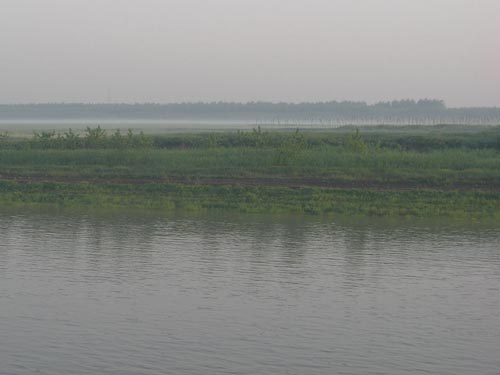
Mist coats the cool river.
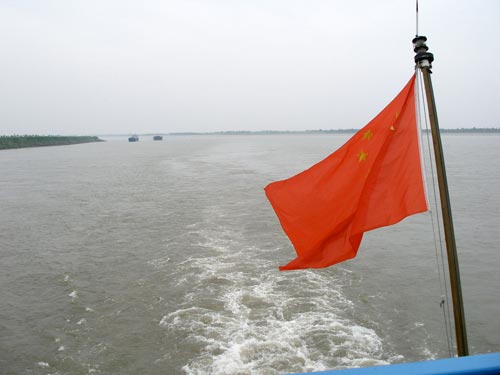
The Chinese flag waves proudly.
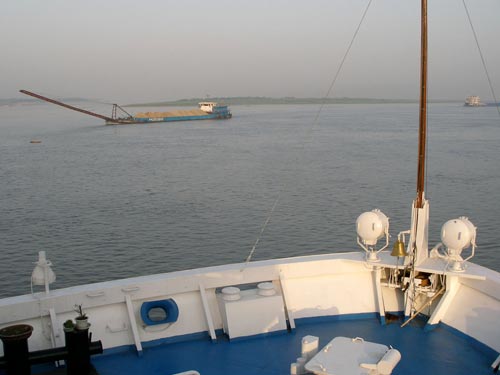
The river continues to the right. The left path (hard to see through the mist behind the boat) leads to Dongting Lake.
Along with river tributaries, the Yangtze receives water from thousands of lakes. The largest of these is Dongting Lake, located on the border of Hunan and Hubei Provinces.
Shipping
The river is a major transportation artery, connecting the interior with the coast.
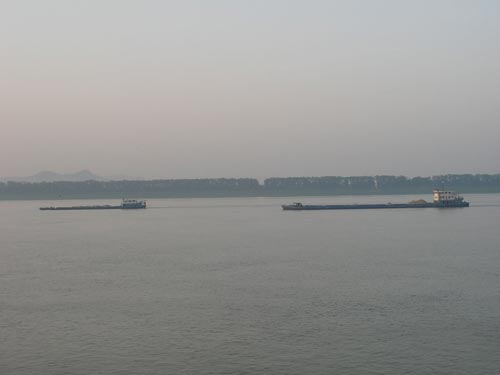
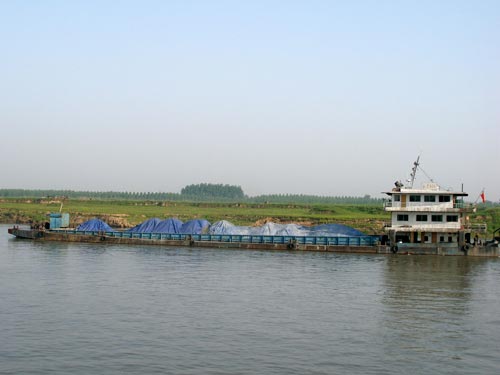
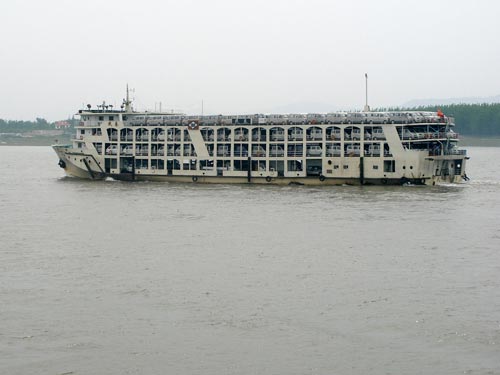
Transporting cars
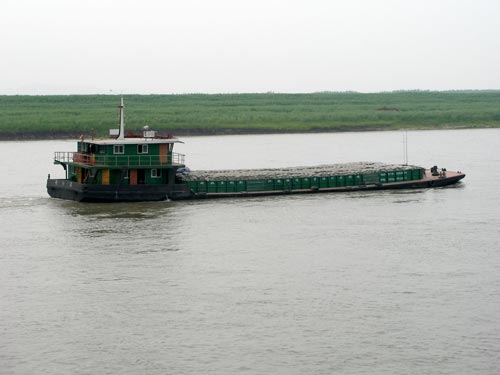
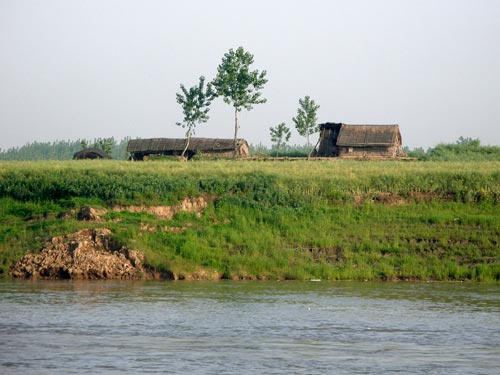
Simple homes
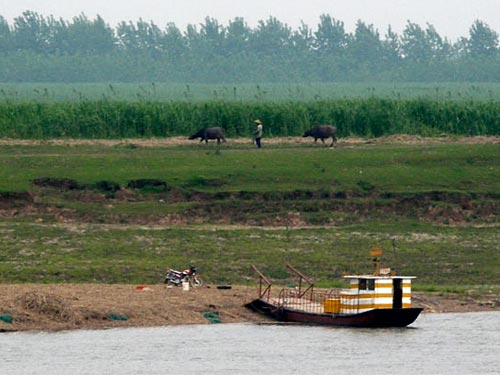
A farmer herds his water buffalo.

The Yangtze basin contributes nearly half of China’s crop production, including over two-thirds of the total volume of rice. Among the other crops grown are cotton, wheat, barley, corn, beans and hemp. The soil is extremely fertile and the climatic conditions are highly favorable to agriculture. In the lower basin and delta, the growing period ranges from 8 to 11 months, and in some areas, two or three crops can be harvested annually.

The cut crops are piled up and left to dry.

A closer view
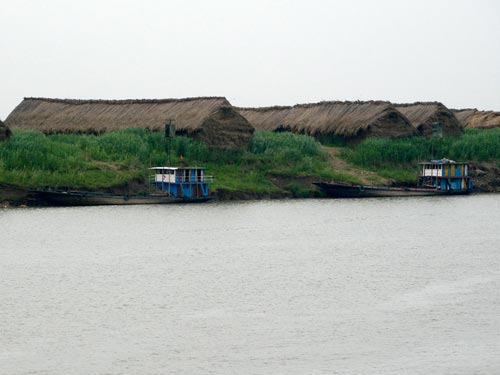
Large barges then pull up to shore...
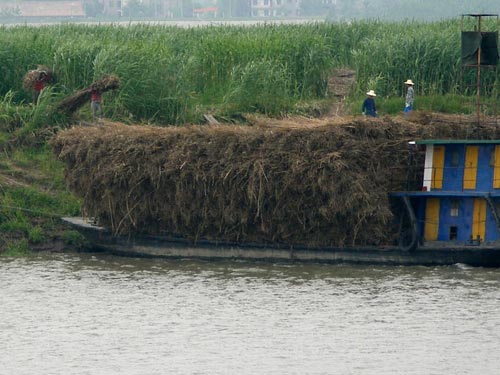
... and are loaded up...

... and up!
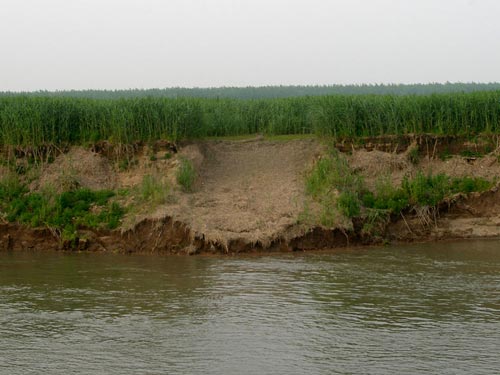
Eventually all that is left is a beaten down path to where the boat once sat.

